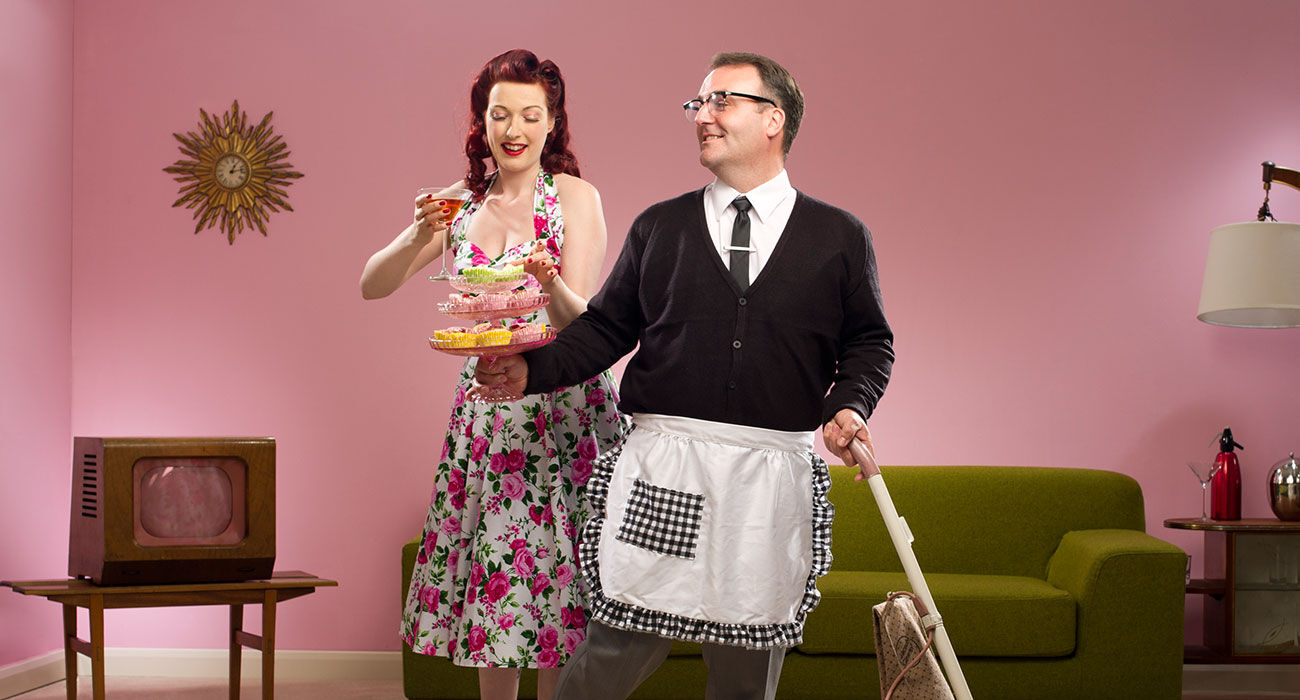93% of mothers do not want their partner to become a stay-at-home parent: ‘Unsexy’
Image: Getty Images
In the past fifty years, things have certainly changed in terms of the division of tasks within the family. Yet less than half of our readers are satisfied with it, according to the Kek Mama’s role distribution survey.
‘A smart girl is prepared for her future’, was the message around 1990 in government PO Box 51 commercials on TV and radio. The goal: to stimulate emancipation and labor participation among girls and young women and to make them aware that they must be able to stand on their own two feet in case of emergency.
The campaign had an effect. Because where in 1990 only a quarter of women were economically independent, in 2022 this was 66%. But that also means that 34% of women are still unable to stand on their own two feet financially, at a time when at least a third of marriages fail.
“34% of women are still unable to stand on their own two feet financially”
Many more women than men still work part-time. Almost half of women reduce or stop working when they become mothers and earn less than their partner. What does this mean for the division of roles within families? It’s high time for a survey among Kek Mama readers.
Castings
With more than 1800 respondents aged 27 to 50 with children up to 12 years old, the number of responses to our annual survey was higher than ever, and the topic of ‘who does what’ is a hot topic. Striking: the majority of the readers – mostly mothers – who completed the survey live in a ‘traditional’ family. No less than almost 92% are together with the partner with whom they had children. More than 6% are single mothers, with or without co-parenting, and more than 2% have a composite family.
The 1.32% stay-at-home parents who responded are all in a ‘traditional’ family. “But I wanted stay-at-home moms not to be seen as women who don’t work or contribute to society,” responds one reader (31). “That is the biggest misunderstanding there is. It is hard work and when husband and child feel good about themselves, it has an effect on society.”
To work
The majority, almost 58% of Kek Mama readers, work 25 to 36 hours a week and within the relationship feel as free as their partner to choose how much they work. “In fact, as a woman I feel more free to choose to work less, because that is more easily accepted from women than from men,” responds one reader (37).
On the other hand, there is also a large group of women who do not feel that freedom. One reader (33) says she feels pressure to work part-time instead of full-time, because more is expected of women.
“I regularly get comments that I work too much. While I am much more at home with the children than my husband”
Another (34) says: “My husband appreciates being with the children one day every two weeks, but I regularly get comments that I work too much. And that while I am much more at home with the children than my husband.”
Co-parenting
In the single and blended households, everyone who responded to our survey works, but also feels obliged to do so. It is therefore not surprising that less than half of single parents are satisfied with the division of labor in the family; who work on their own for a living – not including child support.
49% of single parents are satisfied with their employment situation
One of the respondents (32) in a blended family says: “I have five jobs to pay for my four children and the rent.” Or as divorced single mother Charlotte (39) says: “If my children’s father worked, he could at least contribute financially to the care of our sons aged 12 and 9. Instead, I pay for all care, and for all expenses, except for two weekends a month.”
73% of Kek Mama readers* work less than their partner, more than 70% are happy with the division of labor
Yet among Kek Mama readers in general, almost three-quarters work less than her partner. 70% of mothers with co-parenting work less than their ex-partner. More than 70% of people in ‘traditional’ families are satisfied with this situation, compared to almost half of people in blended or single-parent families.
Read also – From career tiger to stay-at-home dad: ‘Some people ask if I still find him attractive now’ >
Stay-at-home parent
Nevertheless, almost no one among the respondents wants a partner or co-parent who stops working completely to take care of the children full-time, even if money is no object, although almost 1.5% would like to stop working completely if you could.
“I don’t want to think about it, a man who is always at home,” says Regina (37). “I do a lot of my work from home, so we would always be on top of each other. War guaranteed. Conversely, I wouldn’t want to be home all the time either. I did it until the youngest was four years old, then I happily started applying. For a part-time job, yes; I want to have time for the children and myself.”
93% of mothers do not want their partner to become a stay-at-home parent
“Onsexy”, calls Desiree (40) a completely non-working partner. “Even if he took such good care of the children. I want my husband to be more than just the father of my children, I also want to desire him for who he is as an individual, and for his ambitions. Exactly why he desires me too. An intermediate form, in which we both partly provide care, is a different story – and that is how we do it.”
1% of mothers want to stop working altogether
For Malou (33) this is incomprehensible. “I would like to be at home all day with my toddlers of one and two years old. Bake some cookies, have lunch outside the door, walk in our pajamas until noon. But yeah, we can’t afford that.”
Fulltime job
When asked, more than 55% of readers acknowledge that staying at home for the children is a full-time job, but almost 67% also believe that stay-at-home parents have a small world.
57% believe stay-at-home parents have a full-time job*
“The horror”, Ella (36) horrifies. “Four weeks after my second birth, I was already raging over the newspaper, getting angry about stupid political decisions and other world suffering. Please go back to work as soon as possible, my husband shouted; I flew against the walls through life in baby rhythm.”
4% find stay-at-home parents lazy and unambitious*
In addition, almost 36% of parents with a higher vocational or university education indicate that they consider staying at home for the children a waste of their education. “But sometimes that is financially more attractive than working and having to give almost the entire salary to childcare,” explains Monique (32), who completed a higher vocational education, but decided to temporarily stop working after the birth of her son. “My boyfriend earns more than me, it made more sense for him to keep his job. And so nice that I do it practically for free, I don’t like working now.
More results and experiences of fellow parents can be found in Kek Mama 06-2023, in stores from 30 May.
* When using the word ‘respondent’, we often refer to ‘her’ because the vast majority of Kek Mama respondents are women. Answers come from respondents within ‘traditional’ families.
Read the best stories, most recognizable columns and the best tips for you and your kids every month. Subscribe to Kek Mama now and get up to 45% off.



